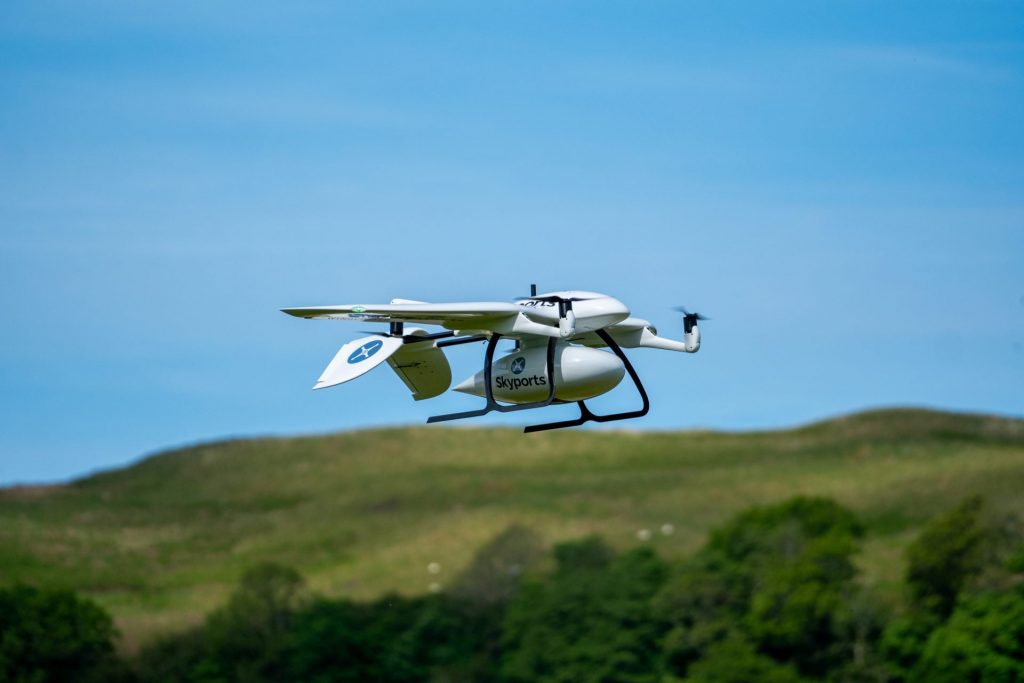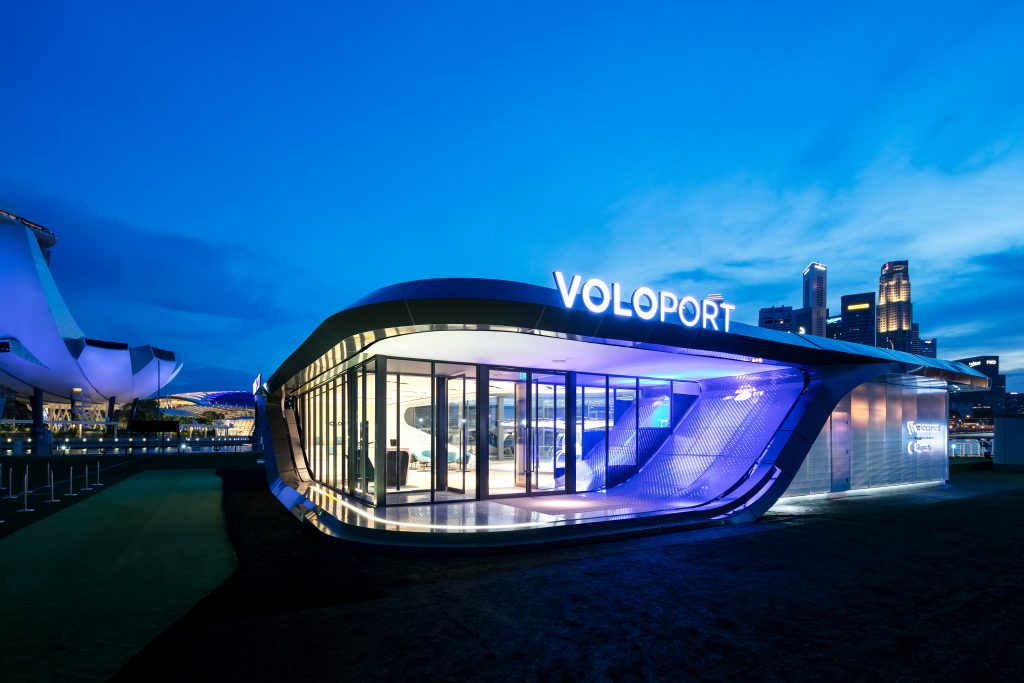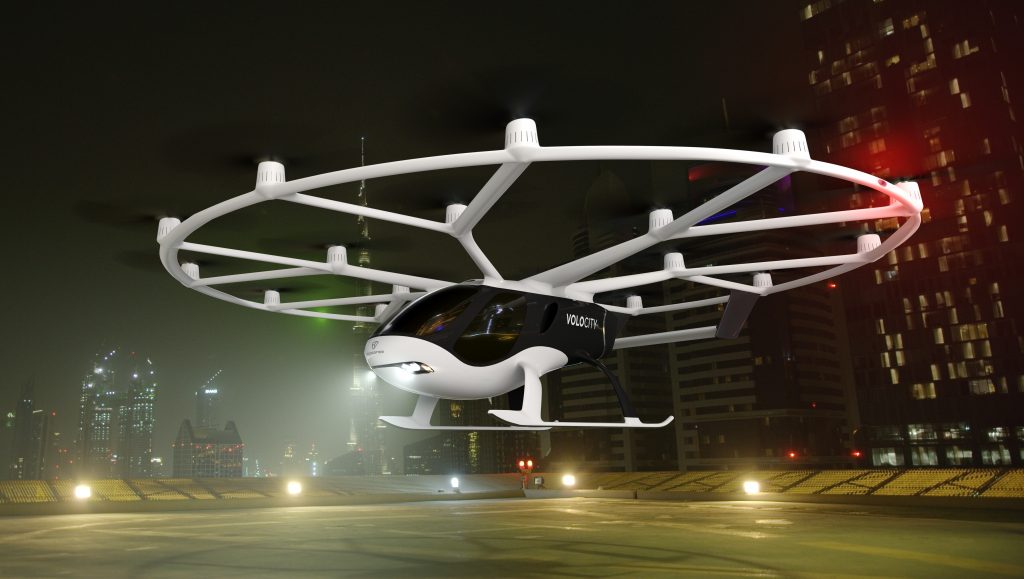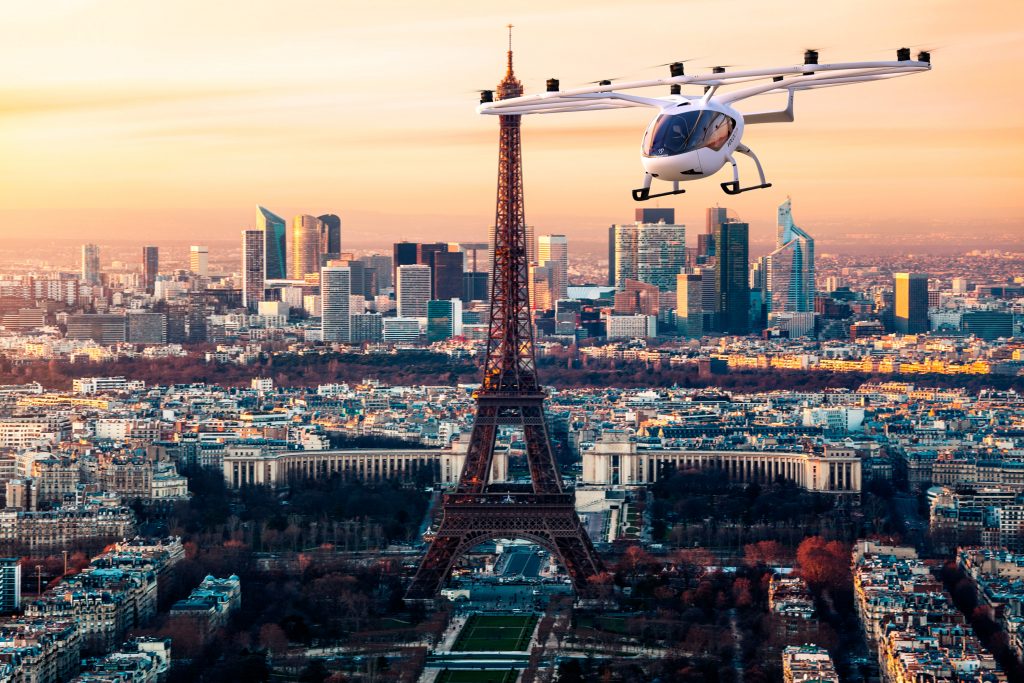
Have a question? Call now! +1 646 810 8764

Welcome to Luxury Lifestyle Awards!
Would you like to talk to one of our award managers about nomination of your company?
Our team is happy to help with any questions you may have.
Call: +1 646 810 8764 Send Email Live Chat Contact Us15.02.2021

An interview with Duncan Walker, CEO and Founder Skyports. Interview was prepared by Rhapsody Magazine
Rhapsody Magazine and Idea Events organized a new edition of Sustainable Mobility Forum, dedicated to visionaries and innovators from around the world, and their ideas about the future of urban air transport. The guest speaker of the event was Duncan Walker, CEO and Founder Skyports, and we interview him to find more about the present and future of Skyports, and the latest in the technology they are developing, to create a sustainable and safe urban air environment.
Skyports is among the visionaries in urban air mobility, contributing to the electrification of the aviation industry, with the aim of finding innovative solutions that lead to a reduction in the carbon footprint and, at the same time provide answers to questions about sustainable mobility for overcrowded cities. e-VTOLs and the related infrastructure, designed and operated by Skyports, are an alternative solution to the existing ones, as a response to the need of reducing pollution in major cities, and streamlining traffic.
In our interview, Duncan Walker pointed out the advantages of using such e-VTOL (electric vertical take-off and landing) technologies, both in the case of air taxis and cargo drone transport, and appreciated that, within four years, we will see them used commercially. Compared to other aircraft currently in use, they are clean, much safer, cost-effective, and can land, without problems, in tight spaces. Moreover, their main usefulness lies in the fact that, in addition to the advantages listed above, they can land in the middle of crowded cities, bringing users the advantage of reducing the time spent in traffic. Find more about, in our interview with Duncan Walker.
R.M. Duncan, thank you for accepting our invitation, let’s talk about the future of mobility! SKYPORTS, air taxis, cargo drones….please let us know more about, and how it all started….
D.W. Thank you for inviting me… sure, let me start by saying that urban aerial mobility represents the electrification of flying transport around cities so, air taxis and cargo transportation by electric aircraft.
About three years ago I was doing some research on mobility, and how that’s changing around the world… and recognized that there was a big momentum in the electrification of aviation generally. That was driven by a few things: lightweight materials, so the ability to lift is easier, and greater battery energy density, which means more power to get things up in the air. That, combined with some regulatory changes, which have been coming for quite a long time and are still evolving, has meant that something that has been talked about since 1940, is becoming reality in the very near future. We were looking at the ecosystem and what was happening there, and we realised there were about 200 different vehicle manufacturers (this is passenger taxi air taxis alone out there). We realised this is an emerging market, there’s billions of dollars going into the space, and if this is going to be meaningful for countries and cities to help combat pollution and to help combat traffic, to assist with ground infrastructure that is usually at capacity or over capacity already, meaning lots of congestion.
These vehicles are going to need safe, secure, well-located landing infrastructure… airports today are great, but they tend to be (because of the huge land take), on the edge of cities, compounding the problem between getting in and out of town. Indeed, airports are a key part of the overall network of urban aero mobility, but our vision was that for this to be truly meaningful, you need heliports or vertiports, as we call them.

R.M. Why don’t use a helicopter? In dense city centers helicopters have been around forever…why use e-VTOLs, what’s in their favour?
D.W. There are a number of major constraints of helicopters: they’re very expensive (largely due to the maintenance and the downtime); they’re very noisy (largely due to the combustion engine); sometimes they’re unsafe (depending on exactly what type of helicopter we are talking about), many of them have what’s called “a single point of failure”, so one motor, one connection with the rotor, which makes them relatively unsafe compared to the aviation industry, which is the most safe of all transportation industries. e-VTOLs, can solves quite a lot of the problems which have been a challenge for a long period of time; they are electric, electric is much quieter, much simpler motors (much less maintenance downtime); the configurations are different (they have what’s called “multiple points of redundancy”), so you have multiple rotors, multiple motors, multiple batteries, that gives you a further degree of safety. Now, if you combine all of that, which drives social acceptance and safety, with scaled production, which is where the industry is going directionally, then you get a price point reduction, which then enables this form of transportation for the masses.
This is never designed to be a replacement for helicopters, the long-term intention of this industry is to become a scaled form of production for people and cargo. If you can get to autonomy as well, take the pilot out of the vehicle (which is the largest cost item and, by the way, also the biggest single point of failure in any helicopter accident), then the price point falls to a level which is very meaningful for a large part of the population.
So, all of these factors, which were coming forward, said to us that we need to go forward. We looked for cities around the world to identify locations which can accommodate these vertiports for electric vehicles, so we set up the company.
We spent about a year understanding the ecosystem, who the players were, who the big vehicle manufacturers were, who the regulators were, which cities might be excited about this, being a first mover market, and then, in 2019 (a year after our inception), we formed a partnership with VOLOCOPTER, which is a German e-VTOL manufacturer, and we built the world’s first VERTIPORT in Singapore, and really started driving this industry from concept into reality. So….sort of a long introduction, this is where we think this goes; a transportation method which is sustainable, quiet and at a price point which is meaningful for the mass population, not just for the rich one.

R.M. An important part of SKYPORTS activity is dedicated to cargo drones; recently SKYPORTS partnered with Royal Mail to become the first nationwide UK parcel carrier to deliver goods via an unmanned aerial vehicle. What activities and industries can be served, and how the use of drones will change the delivery and logistic sector?
D.W. Indeed, an important part of Skyports activity is dedicated to cargo drones, so apar t from building heliports (vertiports), we do deliveries by drone. Last year we worked with Royal Mail to do their first parcel delivery, as you say. We delivered a parcel to a lighthouse off the coast of Scotland, we also spent a long time with the National Health Service, delivering COVID testing kits from the mainland to outlying islands. Actually, next week we will start phase two of that, which is a much broader network, a wider trial area flying pathology samples and other goods between the main hospital and the outlying islands. So, if you think about that kind of geography there, as a starting point, you’re going over mountains, lakes, rivers, the roads are pretty inefficient because they have to navigate all of this this topography on the ground, and what we could do there was to change a journey which takes six hours by ferry and car, to a journey that takes 15 minutes.
This can change the dynamic of the supply chain therefore, we see it very much as a starting point for what this industry can deliver.
We look to more rural areas and then we see it going, over time, towards urban areas, we see it moving from healthcare which will always be a fundamental part of the drone delivery network because it’s high value, it’s urgent but, over time, we see that migrating more to e-commerce to logistics and into more urban environments.
R.M. You told us before that one of your “out of the box” project was the cooperation with Volocopter and the launch of first passenger vertiport prototype in Singapore… what is a vertiport? How does it look, and how can be a problem solver, in terms of city transportation?
D.W. Like I say, there’s about 200 vehicle manufacturers out there, at various stages of design and development.
First point to note is that all of these vehicles are certified by either the European Air Safety Agency in Europe, or the Federal Aviation Authority in the U.S. or the other regulators in their country so, the level of safety threshold for all of these vehicles is no less than a commercial airliner, which is important for the industry as a whole, but also for public perception in terms of safety and efficiency.
Second point to note is all of them take off and land vertically, so whereas many of them have a wing, they all can land in constrained environments i.e city centers you don’t need the big runways of traditional airports.
The third point to make is all of them are electric, that has the implications that I’ve talked about of noise, of safety, of reduced maintenance, of the potential for autonomy. Singapore was a proof of the concept and we’re launching commercial operations there within two years. We have a partnership with VOLOCOPTER, one of the leading German e-VTOL manufacturers; they anticipate getting their certification from EASA within the next 18 months to two years and as previous said, their vehicle have multiple safety features, multiple backups in case things can go
wrong, that I’ve already talked about: multiple rotors, in fact there’s 18, each of them has an independent motor, and also nine batteries.

So, this vehicle, called VOLOCITY, will be operational in 18 months or two years, and can carry 200 kilograms or two people. It is very quiet, actually one of the things that we discovered when we flew around Marina Bay in Singapore, and we’ve got some fantastic video footage of it, is people walking along the sidewalk with the VOLOCOPTER behind them at 70 meters; they don’t even turn around, you can’t even hear that it’s there unless you know it’s coming, and even on landing, is not that much more noisy than existing city environmental noise
Frankly, you know, people focus on passengers because it’s exciting and you can conceive yourself taking this form of transport at some point it’s equally applicable to cargo transportation as I talked about earlier in both rural and urban environments.
Most of the vehicle manufacturers are developing alongside their passenger vehicles the cargo vehicle and that has huge applications for urgent medical deliveries retail supply chains complex to reach places so we’re doing work with ship to shore some resupplying ships off the coast, oil rigs, anything with an environment that’s difficult to navigate by land.
R.M. You already told us about the differences between Vertiports and heliports… I have a question: can you tell us what are the markets where your company is present today or intends to enter in the near future?
D.W. That’s a good question… it’s a bit of a balance at the moment, because there’s lots of cities that are showing some degree of interest, so, what we always look for with any city we go for, is a combination of political and regulator alignment. When launching any new industry you’re looking for the path of least resistance, for an environment which of course has a market, but also has an ability to get commercial operations within the near future. You don’t want to go into the hardest place and have a huge fight on your hands for the next 10 years, you want to get to a place where even if it’s not the biggest market in the world, it’s a start, and it’s a proof point and it moves forward. We deliberately play in lots of cities at the moment, because it’s not quite clear who wins the race, and I think there’s a serious momentum in a number of places around the world, which is really exciting. Singapore, of course, where we are active, they’ve got a very well aligned government and regulatory authority, so they are very well coordinated at the top level, which is helpful.
Implementing something like this is a multi-government agency challenge, aviation authority, sustainability transportation etc.
We are doing active work in Paris, trying to launch for the 2024 Olympics; one of our shareholders actually is Groupe ADP, which is one of the biggest airport owner and operators in the world, they have four of the main airports around Paris, and a lot of the local airports as well, and we hope to have commercial operations for 2024 there; then, there’s a number of places in the U.S.A, like Los Angeles or Florida to name some.

R.M. Duncan, one more question, please, before we finish the interview…. What’s next and how far are you, in terms of technology milestones, to the development of a fully commercialized urban drone delivery operation?
D.W. Urban drone delivery is hard, you know….we made a deliberate decision within our drone delivery business to focus on rural applications first. When you’re doing drone deliveries, you’re interested in ground risk, and in air risk, as well as business case, of course.
From a risk perspective, and if you just consider an urban environment, the ground risk is higher: you’ve got way more people, more buildings, it’s more complicated.
By going rural, suburban, and then urban, my personal perception is that to any degree of scale now, we can fly a route between point A and B which we can agree with the regulators, and we can close a bit of airspace, and you can contrive proof of concept.
But, when I’m talking about a commercially viable useful network in a city center, I think that is two to four years away. That’s because we’re dealing with a new set of regulations, and a new set of technology, you need basically full autonomy on your vehicles in order to achieve urban operations. You need also other forms of safety, like parachutes. In a rural environment, if the flight path is over the sea, a forest etc, it’s not necessary to have a parachute on the vehicle, because the consequential risk of failure is pretty much zero. If it crashes in the sea, it’s a drone lost, but it’s not going to hurt anybody. If we have a failure in the air in the city, we want to make really sure that that drone is coming down in a very safe way, which is generally with a parachute. So there’s technology add-ons for urban operations which are absolutely achievable, but I think they’re still two to four years away before they are accepted by regulators and by the public as being safe, which is two different things, but equally important.
R.M. That’s sooner than expected, to be honest…. tell me… do you think, in the future, today’s automobiles will be replaced by such vehicles? Will we be able to call for a cab, and an air-taxi will land on our roof?
D.W. I don’t think they’ll ever replace the automobile, and frankly that’s not the intention of the industry. It’s an additional form of transportation, and a lot of the focus we make is on multimodality, how we connect with other forms of transportation. We don’t think that this is a replacement for ground transportation, we think is in addition to an overstretched network, and it might make the experience of driving a little bit more pleasurable. If you look now at driving an urban environment, your average speed, if you’re in New York, is four and a half miles an hour. That is not a very pleasurable driving experience, so maybe we take a little bit of the load off the roads, but it’s not a replacement.
Then, answering to your question, when you call a cab, not every building will have a vertiport because of some practical things, like space and ability to get to the top of the building, but also from safety reasons… you can’t have four vertiports operating from four buildings very close to each other. Ultimately the technology is probably there to cope with that, but it’s not required…. like, you don’t need a subway stop on every corner of the street, you can build a network that accommodates with a reasonable period of time the transportation savings, so you know that network will evolve over time.